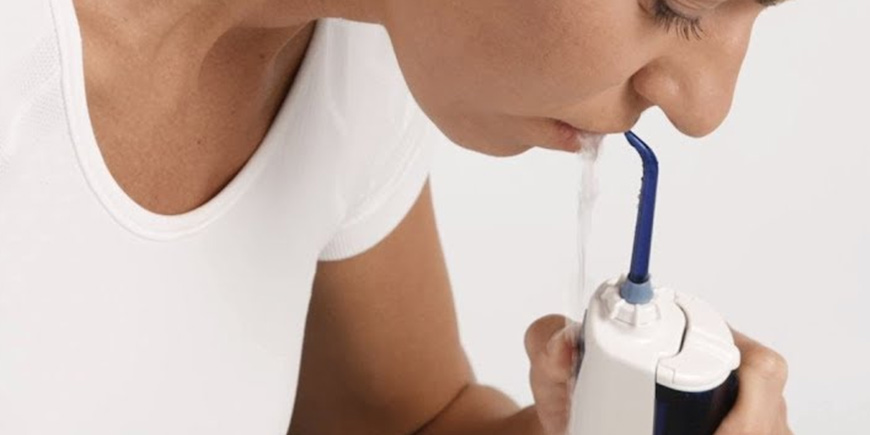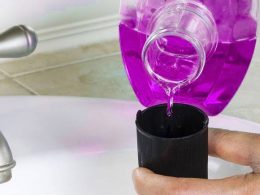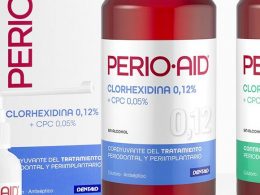Table of Contents
The first oral irrigator was introduced to the dental profession in 1962. It was developed by a Colorado Dentist who, in an effort to improve his patients’ oral hygiene, enlisted the help of a patient, a hydraulic engineer. The oral irrigator, also called a dental water jet, is known today as a water flosser.
While it is one of the most studied self-care devices on the market, questions remain regarding its efficacy, safety, and outcomes. This post will provide answers to many of these questions, based on clinical research findings.
A Waterpik is a brand of water flosser or oral irrigator that sprays water to remove food from between your teeth. Water flossers may be a good option for people who have trouble with traditional flossing, the kind that involves threading string-like material between your teeth.
How to Use It
A water flosser does not replace your toothbrush or traditional flossing. You still need to brush your teeth twice or three times a day, but you can use the water flosser before or after as complement.
Fill your water flosser’s reservoir with lukewarm water, then put the flosser tip in your mouth. Lean over the sink to avoid a mess.
Turn it on and then it is time to clean. Hold the handle at a 90-degree angle to your teeth and spray. Water comes out in steady pulses, cleaning between your teeth.
Start at the back and work your way around your mouth. Focus on the top of your teeth, the gum line, and the spaces between each tooth. Remember to get the back of your teeth, too.
The process should take about 2 minutes. Empty any extra water from the reservoir when you are done so bacteria does not grow inside.
How It Works
Like regular flossing, water flossing removes food stuck between your teeth and the bacteria lingering there before it hardens into plaque. Your toothbrush cannot get into those small spaces. Water flossing can also reduce gum disease, tooth decay and bleeding.
Is Water Flossing as Good as Dental Floss?
The American Dental Association (ADA) says that irrigators with their seal of approval are effective in removing plaque. Dental plaque is the substance that later turns into tartar, causing cavities and gum disease.
The science supporting the efficacy and safety of the water flosser is strong. Many people have heard that a water flosser cannot remove plaque, likely because simple swishing with water is ineffective against plaque. But the research tells a different story. When compared to traditional string floss, water flossing has been shown to be significantly better for removing plaque and reducing bleeding and gingivitis.
A study at the University of Southern California Center for Biofilms found that a three-second water flossing application removed 99.9% of plaque biofilm. The researchers observed via scanning electron microscopy that the combination of pulsation and pressure produced by the water flosser created shear hydraulic forces that effectively removed the plaque biofilm.
However, at DENTAL VIP we consider that it is always best to combine the 2 techniques: manual and irrigation.
Do not throw away your traditional dental floss just to try something new. Most Dentists still consider regular flossing the best way to clean between your teeth. The old-fashioned stuff lets you scrape up and down the sides of your teeth to remove plaque. If it gets stuck in small spaces, try waxed floss or dental tape. Flossing might be uncomfortable at first if you are not in the habit, but it should get easier.
Who Should Use a Water Flosser?
Recommendation of self-care devices by dental professionals is based on individual needs, values, preferences, and desired outcomes.
Most likely, a young patient, with healthy teeth and great ability to perform oral hygiene techniques; do not require this device. However, studies have shown that a water flosser can benefit many patient types and oral conditions.
Orthodontics
Orthodontic appliances present oral hygiene challenges regardless of age.
A study of 105 adolescents between the ages of 11 and 17 who used a water flosser with an orthodontic tip showed significant reductions in plaque and bleeding over 4 weeks. These results are similar to a previous study that paired a water flosser with either a manual or power toothbrush and compared it to toothbrushing alone in adult orthodontic patients. Regardless of the toothbrush used, the water flosser groups showed significantly greater reduction in bleeding and inflammation compared to subjects who only brushed.
Periodontal Maintenance
Patients undergoing periodontal maintenance therapy have an increased risk of future loss of attachment, requiring excellent oral hygiene. Patients may have to clean the concavity of the proximal surfaces of the teeth and may be left with 4-mm to 6-mm pockets to maintain. Interdental devices such as floss, wood sticks, and interdental brushes cannot clean into these pockets and may not reach the concavity or furcation.
Several studies have evaluated the subgingival penetration of an oral irrigator.
Eakle et al. tested a standard or classic jet tip placed at 90-degree and 45-degree angles to the long axis of the tooth at the gingival margin. With both angles, depth of penetration varied with pocket depth, with an average of 50%. When placing the tip at a 90-degree angle, a mean percentage of 71% for shallow pockets (0 to 3 mm), 44% for moderate pockets (4 to 7 mm), and 67% for deep pockets (greater than 7 mm) was obtained. Placing the tip at a 45-degree angle did not increase penetration, and in some cases penetration was less than when using a 90-degree angle. Notably, 75% or more penetration was seen in 60% of pockets greater than 7 mm.
Larner et al. reported 42% penetration in 4-mm to 6-mm pockets and 39% for 7-mm to 10-mm pockets. He also reported that the use of a special tip with reduced flow and pressure, located under the gum, was capable of reaching 90% of the 6 mm pockets and 67% of the pockets equal to or greater than 7 mm.
Fixed Prosthodontics
It is wrong for you assume that a veneer, dental crown or bridge is an artificial structure and therefore does not need to be cleaned and maintained. Because they need just as much care as natural teeth and sometimes even more.
The thing is though, flossing is not easy and it becomes virtually impossible if you have subgingival restorations (extending below the gum) or large rehabilitations such as fixed dental bridges. Dental bridges are essentially 2 or more crowns, joined together with strong joints in order to fill an empty space left by an extracted or lost tooth.
Bridges last from 10 to 15 years and unlike popular belief, they can trap food, induce decay and even accumulate plaque and tartar. So they need an effective and stringent oral hygiene routine.
Wondering how to put floss in a tight dental bridge to clean it thoroughly?
Unlike natural teeth, dental bridges have no spaces between its units. So this means that the traditional string floss cannot pass in between to clean the areas that need cleaning. Not only that, but bridges tend to trap food and debris under them (between the bridge and the gums). This area is often neglected and could result in both inflammation of the gums as well as problems to the teeth carrying the bridges.
With dental crowns the situation is very similar. Crowns are covered by porcelain, which could have a rough surface or minute nodules in the contact area. This makes it extremely difficult to get your traditional string floss between your restorations to clean them effectively. As you can probably deduce, string floss is not going to cut it. It is impossible to pass it between the units of the bridge and quite difficult to pass it between the bridge and natural tooth.
Water flossers can be the solution to all problems related to flossing in this cases. These amazing devices are capable of cleaning anything and anywhere. They use a strong, pulsating jet of water to wash away plaque and food debris with a delivery system similar to a small pen.
As you can imagine, they are extremely easy to use with no need for special skills. They can easily clean under bridges, between crowns and natural teeth, and anywhere else you can think of.
The water current adapts itself to the location and effectively pushes away the plaque and food remnants. These devices have been tested for thoroughly. Studies have shown that they decrease gum inflammation and bleeding for people with veneers, crowns or heavy restorations as bridges by more than 29%.
So basically the solution to our problem could be something as simple as water, go figure!
Implants
The dental implant has become a mainstay for the successful restoration of missing teeth. Yet people with dental implants are at risk for developing peri-implant mucositis. When caught early and treated nonsurgically, mucositis can be reversed. If not, it can lead to peri-implantitis and bone loss around the implant. Peri-implantitis increases the risk for implant failure.
Peri-implant mucositis is common, occurring in up to 80% of people with implants or about 50% of implant sites. The most common cause is the buildup of bacterial biofilm. The same type of gram-negative anaerobic bacteria present in periodontal disease is often found in peri-implant diseases. Therefore, the daily elimination of bacterial biofilm is a key strategy in treating perimucositis.
Self-care may be challenging for people with implants. Whether due to positioning or design, the use of dental floss may not be possible for some people with implants. One self-care device that has been tested and found safe and effective around implants is the Waterpik water flosser used with the Plaque Seeker tip.
In a study conducted at Tufts University in Boston, people who used the water flosser with the Plaque Seeker tip reduced bleeding around implants twice as much as people who used string floss. Specifically, the results found that 19 of 22 implants (81.8%) treated with the Plaque Seeker had a significant reduction in bleeding compared to 6 of 18 (33.3%) implants that were treated with string floss.
The pulsating action of the water flosser helps patients safely and effectively clean difficult-to-access areas, such as those surrounding implants. The combination of pulsation and pressure produces shear hydraulic forces that are capable of biofilm removal. Research indicates that the water flosser can disrupt periodontal pathogens in pockets up to 6 mm deep. A safety review of the literature concluded that the water flosser does not push bacteria into the pocket, increase probing depth, or traumatize soft tissue. Additionally, the water flosser does not produce a higher rate of bacteremia than brushing or flossing.
The Plaque Seeker tip is a modification of the Classic Jet tip that features three thin tufts of bristles to help access and remove biofilm. The tip is easy to use because the filaments can be traced along the gingival margin and embrasure area, which can be especially beneficial to first-time users. New users tend to look in the mirror when using the water flosser, which can result in water splashing on the counter or the person. To avoid this, we advise our patients to look into the sink. The tip should be used on both the facial and lingual areas.
It is important to instruct new users to begin using the water flosser on the lowest pressure setting and increase the pressure setting as it becomes comfortable. The water flosser has been shown to be most effective on the medium-high setting. This means patients should reach at least the “7” setting on a countertop or the high setting on a cordless unit, as this was the pressure found effective for implants in the study conducted with the Plaque Seeker tip.
Regarding what solutions are best for the water flosser, tap water has been evaluated and found effective in numerous water flosser studies, including the implant study at Tufts. Warm or room temperature water is recommended. Medicaments may also be used. Many people like to add a capful of their favorite mouthwash to the water solution. Any time an agent other than water is used in the water flosser, it is recommended to partially fill the reservoir with water and flush the unit.
Thorough daily biofilm removal is important in preventing peri-implant mucositis and peri-implantitis. The Waterpik water flosser used with the Plaque Seeker tip can help patients achieve and maintain good implant health.
“To Our Understanding, the Irrigation Technique Will Always Be Indicated as a Coadjuvant Resource in the Hygiene of Patients with Orthodontics, Fixed Prostheses and Dental Implants”.
DENTAL TIP
Diabetic Patients
People living with diabetes have an increased risk for periodontal disease that can present earlier and be more severe. Finding ways to keep the inflammation in check is important and may require a more focused or rigorous homecare program.
In a 3-month clinical trial, the water flosser was shown to be beneficial to this population. Fifty-two type 1 and type 2 diabetics were randomly assigned to one of two groups. Group 1 used a water flosser plus subgingival tip twice a day with manual brushing. Those in the control group continued with their current oral hygiene routine. At the end of 3 months, the irrigation group had significantly better improvements in gingivitis, plaque, and bleeding on probing compared to controls.
Multiple studies show a benefit for patients with varying degrees of gingivitis. Others who may benefit are those with an increased risk of infection or inflammation, and even those who have relatively good homecare.
If you wish to obtain more information about Waterpik water flossers, please click on the following link www.waterpik.com/oral-health/
Making Dentistry Care Simple and Affordable…
DENTAL VIP is one of the most modern and recognized private dental clinics in Venezuela, and it could be your trustworthy partner in dental treatment abroad offering you: over 12 years of experience in dental tourism, excellent Dentists, high quality treatment covered by guarantee, comprehensive care, supportive and helpful staff, affordable prices and comfortable stay at our recommended hotels in Caracas.
All Dentists working at DENTAL VIP have a long experience in Dentistry and are highly qualified. Our Dentists, apart from having fourth level studies, regularly take part in domestic and foreign trainings, conferences and seminars.
The quality is guaranteed, and the price too! Do not waste any more time, contact us today and save up to 70% on extensive or highly complex dental treatments.












